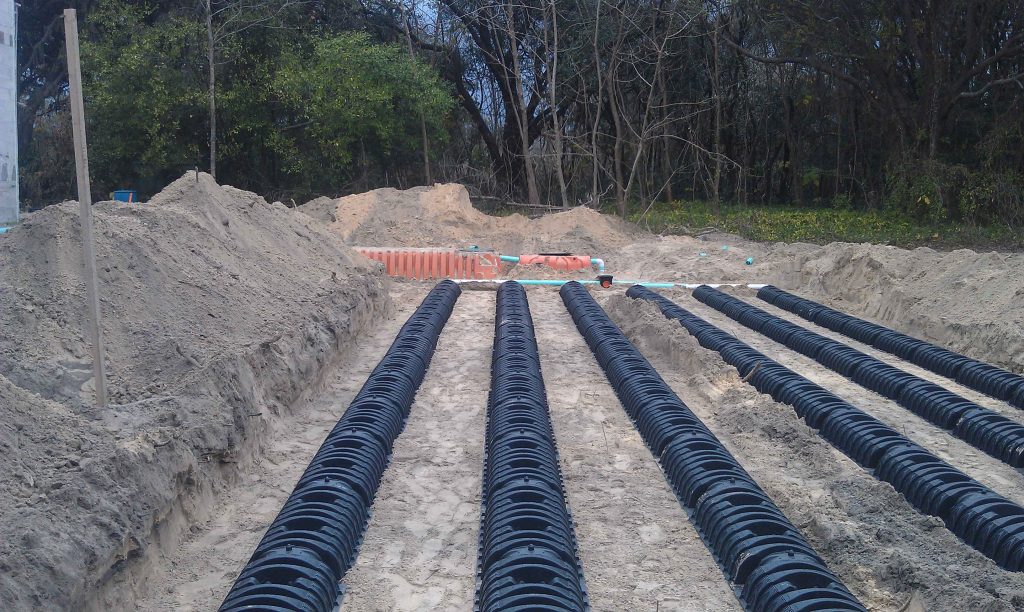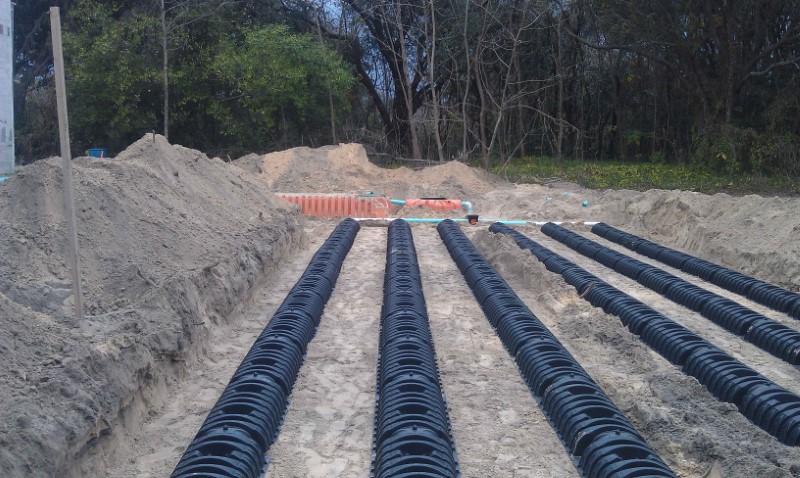
The drain field is also known as the leach field. It is a small network of pipes with perforations. These pipes are laid underneath the surface of the soil in trenches that are filled with gravel. These pipes are important in distributing water into the surrounding environment.
When the treated effluent enters the d-box or distribution box, it gets dispersed into the parallel lines or channels. Through the d-box, small dosing releases the treated effluent into the drain field with the use of a timer. This happens 3-4 times each day. With a systematic dosing, the aerobic bacteria are allowed to recover between releases.
Every trench is 0.3-1.5 meters in depth, at least 20 meters in length, and 0.3-1 meter in width. They are filled with 15 centimeters of perforated pipes or rock, which is covered with geotextile fabric that should fill the trenches. The pipes should be laid 15 meters deep so that the effluent will not overflow. The trenches should also be 1-2 meters away from each other.
There are upsides and downsides to having drain fields. The advantages are:
? Low costs in operation and capital
? Can last for at least 20 years (depends on usage and age)
? Can accommodate both grey water and waste water
The disadvantages of having a drain field are:
? May bring negative effects to ground water and soil
? Treatments are required to keep it from clogging
? You may have problems in getting the parts locally
? It consumes a large area, depending on the number of people in your household
? It needs to be professionally designed, built, and installed
The drain field is effective in dispersing the treated effluent. Since it involves the absorption and distribution of effluents, contamination is a risk. To prevent this from happening, the drain field should be installed at least 30 meters from the area of water supply. If you live in a very populated urban living area, a drain field would not be appropriate to have. But it is good in almost all types of temperature. You just have to look forward to pooling of effluent in certain areas of frozen ground.
You should make sure that there are no trees planted on or near the area of the drain field because the invasive roots will damage the drain field components. It should also be upgraded so that it won’t interfere with any sewer system connection in the future. Upgrading your drain field should be made by your septic expert as recommended by the health or environmental department in your locality.
Your drain field is where the last phase of effluent treatment is done. It is where the biomat and the aerobic bacteria take action. The aerobic bacteria breakdown the minute solid waste particles that the pre-treated effluent may still have. The biomat is the one that filters the effluent and rid it of diseases and contaminants before it is released into the surrounding areas. The aerobic bacteria consume the biomat to regulate it so that it may not be thick enough to clog the drain field.
It is recommended that aerating he drain field should be done so that the aerobic bacteria could proliferate more. It would really do the system good because there would be very minimal clogging or blockages. The effluent’s passage and filtration would also take place much faster.
Biological treatments that use non-pathogenic, cultured bacteria could really make a ton of difference to the drain field’s condition. When bacteria are used, there are no chemical discharges that may contaminate the surrounding water systems or ground water. Ask your septic expert about this to ensure the treatment’s proper application. We hope this answered your question of what is a drain field septic system.
